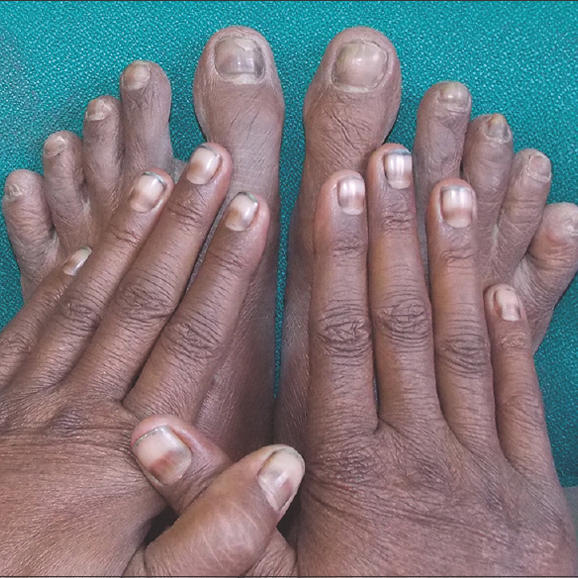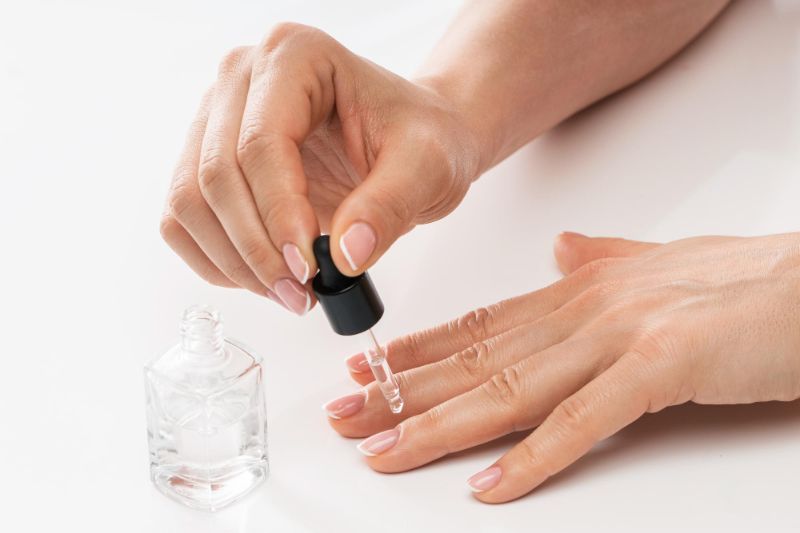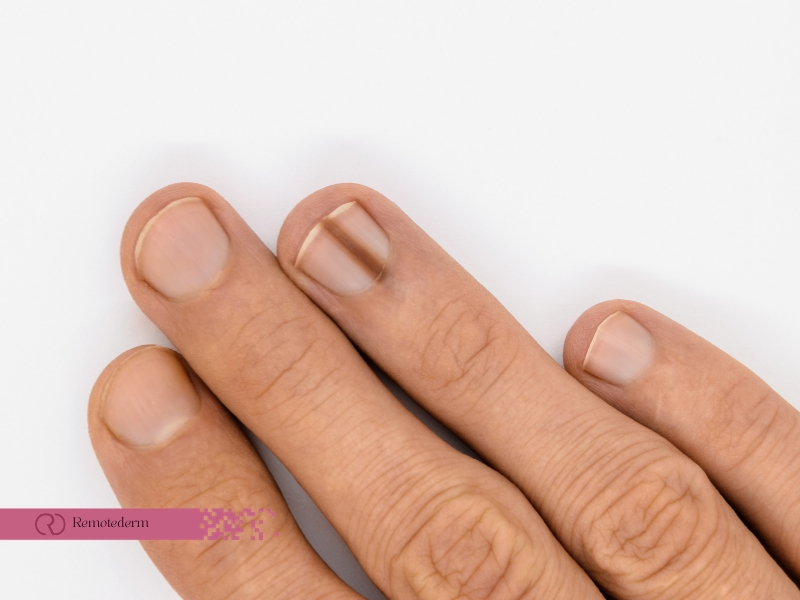In the realm of nail health, Melanonychia is a term that might sound unfamiliar to many, but it’s a condition worth understanding. Melanonychia refers to the presence of dark vertical lines on the nails, often referred to as the “black line on the nail.” In this comprehensive guide, we aim to provide you with in-depth knowledge about this condition, its causes, treatment options, and much more.
What is Melanonychia?
Melanonychia is a condition that manifests as the development of dark lines or streaks on the nail plates. These lines can vary in color, appearing as brown, black, or dark gray. While most cases are benign, it’s crucial to be aware of them as they can sometimes be an indicator of underlying health concerns.
Types of Melanonychia
There are two primary types of Melanonychia:
- Longitudinal Melanonychia:
This is the most common type and is characterized by dark lines running vertically along the nail. It’s vital to distinguish longitudinal Melanonychia from other conditions, as we’ll discuss later.
- Transverse Melanonychia:
In contrast, transverse Melanonychia involves dark lines that stretch horizontally across the nail. This variation can be more concerning and may necessitate immediate attention.

Causes of Melanonychia
There are several potential causes of melanonychia, and understanding them is essential for proper diagnosis and management:
1. Trauma
One of the most common causes of melanonychia is trauma or injury to the nail. This can lead to bleeding under the nail, resulting in the appearance of dark streaks. Subungual hematoma, as it is known, is usually harmless and resolves as the nail grows.
2. Longitudinal Melanonychia
This refers to pigmentation that runs along the length of the nail. It can be caused by benign factors such as excessive sun exposure or use of certain medications. However, it’s crucial to differentiate it from potentially malignant melanoma, which is a rare but serious form of skin cancer.
3. Nail Fungus (Onychomycosis)
Fungal infections can cause dark discoloration in the nails. While not all cases of melanonychia are due to fungal infections, it’s important to consider this possibility and seek treatment when necessary.
4. Medications
Some medications, particularly certain chemotherapeutic drugs, can lead to changes in nail pigmentation, including melanonychia. If you suspect a medication is causing this condition, consult your healthcare provider.
5. Underlying Health Conditions
In some cases, melanonychia may be a sign of an underlying health issue, such as nail psoriasis or melanoma, a type of skin cancer. It is crucial to have any suspicious nail pigmentation evaluated by a healthcare professional to rule out serious conditions.
6. Ethnicity
It’s important to note that some individuals, particularly those with darker skin, may naturally have nail pigmentation variations. This can be considered normal and not a cause for concern.
Melanonychia Treatment
While melanonychia can result from various factors, it is essential to differentiate between benign and malignant causes. Treatment options for melanonychia depend on its underlying cause and severity.
- Observation: In cases where the melanonychia is mild and no other concerning symptoms are present, healthcare professionals may recommend a watch-and-wait approach. Regular nail monitoring can help determine whether the pigmentation remains stable or changes over time.
- Dermatological evaluation: If the melanonychia is persistent or associated with other concerning symptoms, seeking the expertise of a dermatologist is crucial. Dermatologists can perform a thorough examination and may recommend additional tests such as nail matrix biopsy to rule out malignancy.
- Surgical intervention: If melanoma or other malignancies are suspected, surgical removal of the affected nail and adjacent tissue (wide local excision) may be necessary to prevent the spread of cancer. This is often followed by further treatment, such as chemotherapy or radiation therapy.
- Topical therapies: In some cases, where melanonychia is associated with non-malignant causes like trauma or nail fungus, topical treatments may be employed to address the underlying issue. Antifungal agents or steroid creams can be prescribed as part of the treatment plan.
- Lifestyle modifications: For individuals with benign melanonychia, making lifestyle changes like protecting the nails from trauma, quitting nail-biting habits, and maintaining good nail hygiene can be effective in preventing further pigmentation.

Ultimately, the treatment of melanonychia should be personalized based on the cause and individual patient characteristics. Seeking prompt medical attention is crucial for an accurate diagnosis and appropriate treatment. Whether benign or malignant, early intervention can significantly impact the outcome and overall nail health.
Recognizing Transverse Melanonychia
While most cases of Melanonychia are benign, transverse Melanonychia is an exception. If you observe dark lines running horizontally across your nails, it’s imperative to consult a healthcare professional immediately. This form of Melanonychia can be associated with more serious conditions, including melanoma.
Other Nail Abnormalities
In addition to Melanonychia, it’s important to be aware of other nail irregularities:
- White Spots on the Nails
White spots on the nails are often benign and typically caused by minor trauma or fungal infections. If these spots persist, it’s advisable to consult a dermatologist for a professional evaluation.
- Online Nail Dermatology
In today’s digital age, the convenience of online resources cannot be underestimated. You can now access a wealth of information and even consult with Online nail dermatology regarding your concerns. However, always ensure that you choose reputable sources when seeking advice online.
Final Thoughts
In conclusion, Melanonychia, characterized by dark vertical lines on the nails, is a condition with various potential causes, including trauma, medications, skin conditions, and vitamin deficiencies. The key is to identify the underlying cause and seek appropriate treatment. While most cases of Melanonychia are harmless, it’s crucial to distinguish them from more concerning conditions like transverse Melanonychia, which can be associated with melanoma.
Remember, the health of your nails can offer valuable insights into your overall well-being. If you notice any unusual changes in your nails, don’t hesitate to consult a healthcare professional. Your nails can provide essential clues about your health, so take care of them.
FAQs
- What’s the potential risk of Longitudinal Melanonychia?
It’s important to differentiate it from potentially malignant melanoma, a rare but serious form of skin cancer.
- Can nail fungus cause Melanonychia?
Fungal infections can lead to dark nail discoloration, but not all Melanonychia cases are due to fungi.
- Can you consult with dermatologists online about your nail health?
Yes, in today’s digital age, online resources and consultations with dermatologists are available.
- Do certain medications cause Melanonychia?
Yes, some medications, particularly chemotherapeutic drugs, can lead to changes in nail pigmentation.
